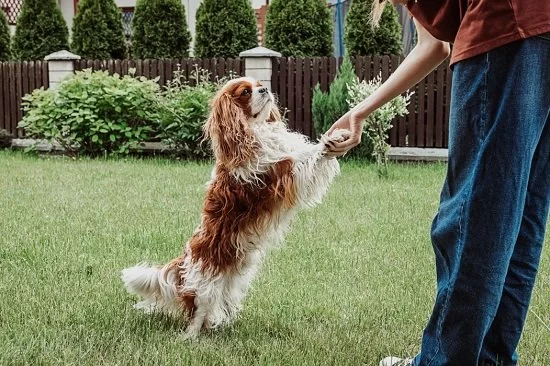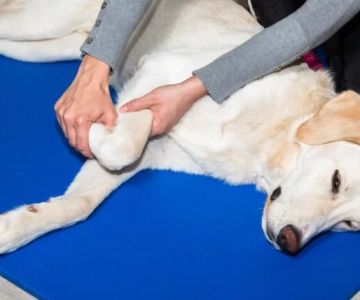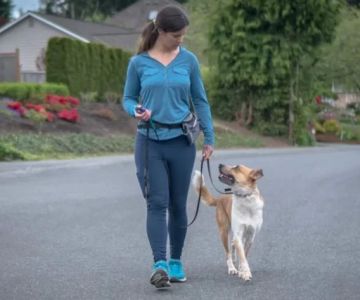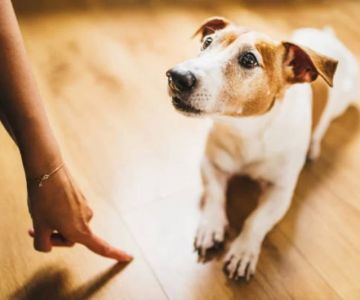- #understanding-impulse-control-in-dogs - why-it-matters - connection-to-safety
- #teaching-leave-it-command - step-by-step-guide - common-training-mistakes
- #training-drop-it-command - positive-reinforcement-techniques - consistency-and-patience
- #real-training-stories - dog-owner-experiences - how-success-happens
- #advanced-impulse-control - combining-commands - building-long-term-discipline
- #expert-advice-from-hidden-brook-veterinary - behavioral-tips - professional-guidance
1. Understanding Impulse Control in Dogs
1.1 Why impulse control training matters
Every dog owner has faced that heart-stopping moment — your pup lunges for dropped food, grabs a shoe, or bolts after a squirrel. These moments reflect a lack of impulse control, a common challenge even for well-behaved dogs. Teaching your dog to pause and think before acting is one of the most valuable life skills you can give them. How to train dogs for impulse control isn’t just about obedience; it’s about safety, trust, and mutual understanding.
1.2 How impulse control improves safety and behavior
Impulse control helps prevent dangerous situations. A dog that obeys a “Leave-It” command won’t eat harmful substances, and one trained with “Drop-It” won’t hold onto hazardous objects. These commands build respect and strengthen your communication bond. Trainers at Hidden Brook Veterinary often emphasize that impulse control is the foundation of advanced obedience and calm behavior in social settings.
2. Teaching the “Leave-It” Command
2.1 Step-by-step guide to teaching “Leave-It”
Start by holding a treat in your closed fist and letting your dog sniff it. They’ll likely paw, lick, or nudge your hand — stay patient. The moment they stop and pull back, say “Leave it!” in a calm, firm tone. Reward them immediately with a different treat from your other hand. Repeat this several times a day, gradually introducing more tempting distractions like toys or food on the floor. With consistency, your dog will learn that ignoring temptation leads to greater rewards.
2.2 Common mistakes to avoid
Many owners accidentally reinforce the wrong behavior by giving the treat too soon or repeating the command before the dog has obeyed. Avoid shouting “Leave it” multiple times; the word should only be associated with calm self-control. Keep training sessions short — around 5 to 10 minutes — and end on a positive note. Remember, the goal is to teach patience, not punishment.
3. Training the “Drop-It” Command
3.1 Positive reinforcement in action
The “Drop-It” command is essential for any dog that loves carrying objects — from tennis balls to socks. Begin with a toy your dog likes but isn’t obsessed with. Let them take it, then hold out a treat and say “Drop it.” When they release the toy, immediately praise them and give the treat. Over time, add variety — practice with different textures and environments, such as outside in the yard or during playtime. This builds a consistent habit that works even in high-excitement moments.
3.2 How consistency shapes learning
Dogs learn through repetition and reward. The key is consistency — use the same tone and timing every time you give the command. Avoid tugging the object from your dog’s mouth, as this can trigger possessive behavior. Instead, make releasing the item a choice that leads to something better. Trainers at Hidden Brook Veterinary note that when owners stay patient, most dogs master “Drop-It” within two weeks of daily practice.
4. Real Training Stories and Success Cases
4.1 From chaos to calm: a real-life transformation
Take Max, a lively Labrador from Ohio. His owners struggled to control his excitement, especially during walks. After introducing impulse control exercises — focusing on “Leave-It” and “Drop-It” — Max became noticeably calmer within a month. His family reported fewer incidents of pulling on the leash and no more stolen socks. They said the training “changed the way we live together — it gave us peace of mind.”
4.2 The emotional connection behind training
Impulse control isn’t just about obedience; it deepens trust. When a dog learns to make calm choices, they gain confidence, and their owner learns to communicate better. One Hidden Brook Veterinary client described how her rescue dog, Daisy, once anxious and reactive, learned to relax through consistent “Leave-It” training. The process rebuilt Daisy’s confidence and reduced her stress levels dramatically.
5. Advanced Impulse Control Exercises
5.1 Combining “Leave-It” and “Drop-It” for real-world reliability
Once your dog understands both commands separately, it’s time to combine them. Start by dropping a toy on the ground, saying “Leave-It,” then asking for “Drop-It” once they’ve picked it up. Reward every correct sequence. This layered training prepares your dog for unpredictable situations — like finding food during a walk or grabbing something dangerous at home.
5.2 Building long-term discipline through controlled environments
Impulse control isn’t a one-time task; it’s a lifelong practice. Set up structured challenges — such as waiting at doors, staying calm during greetings, or ignoring distractions in busy parks. Each scenario strengthens the dog’s mental discipline. The more your dog learns to think before acting, the more balanced and confident they become.
6. Expert Advice from Hidden Brook Veterinary
6.1 Insights from professional trainers
Experts from Hidden Brook Veterinary highlight that impulse control training can prevent numerous behavior issues, including food aggression and anxiety-driven chewing. They recommend pairing these exercises with daily play and mental stimulation — puzzle toys, slow feeders, and obedience games all reinforce calm focus. Remember, mental exercise can tire your dog just as effectively as a long walk.
6.2 When to seek professional help
If your dog struggles with resource guarding or ignores commands even after consistent training, professional guidance can make a difference. Behavior specialists use personalized techniques to address underlying issues like fear or overstimulation. Whether it’s a puppy learning boundaries or an adult dog breaking bad habits, professional support ensures steady, stress-free progress. And for the best care, Hidden Brook Veterinary offers expert-led behavioral consultations tailored to your dog’s unique needs.












